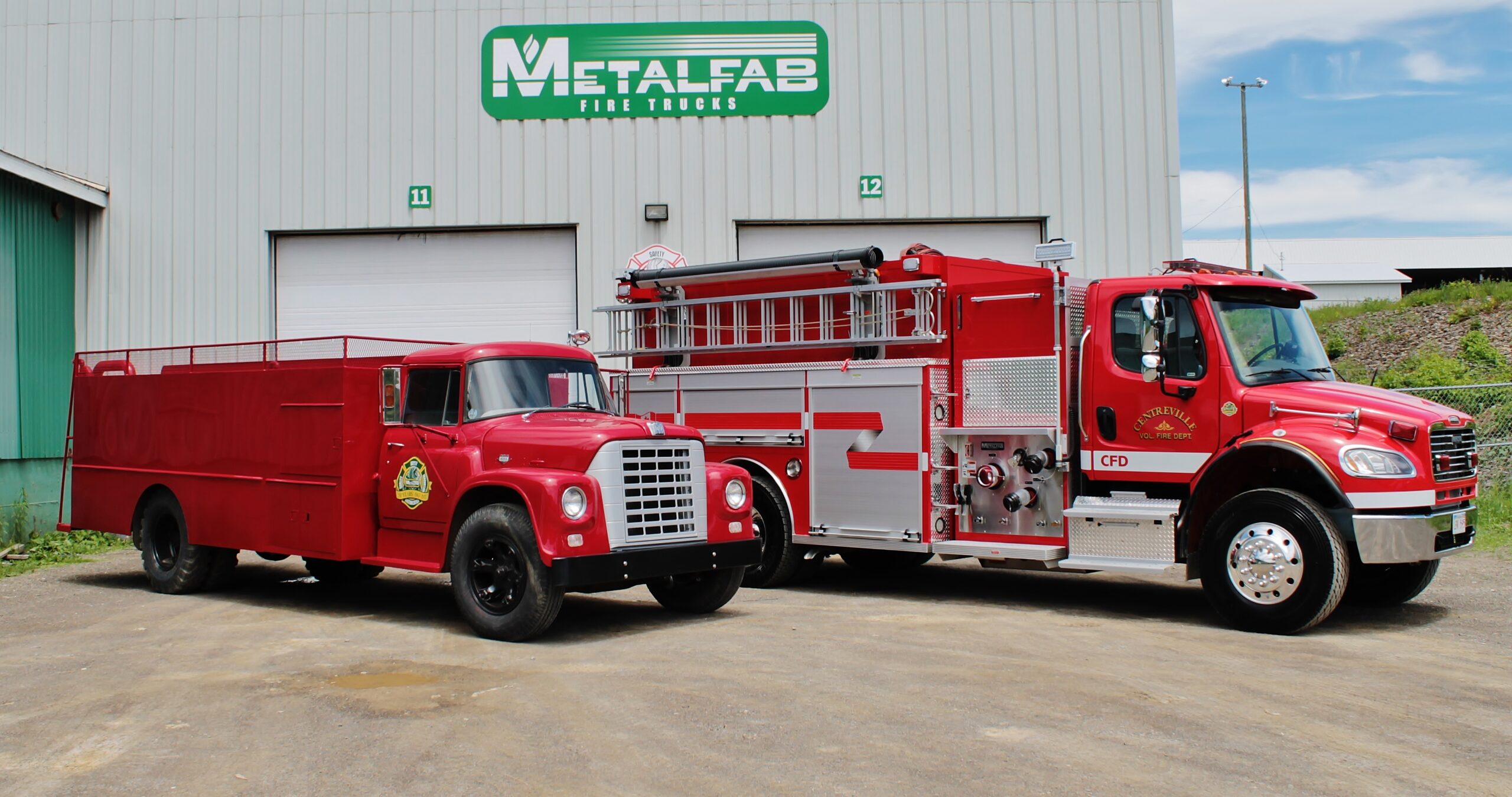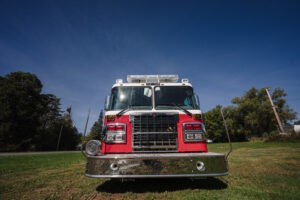
The Story behind the Name: Why 6″ Suctions Are Called “Steamer” Ports

You may have heard the Metalfab team or your fellow firefighters refer to 6″ suctions—or intakes, as it is called by the NFPA—as “steamer” ports. We have customers all the time ask us how and why 6″ suctions got this name when there is no steam involved in their use nor are their any intake processes. In fact, the roots of this term lie in fire service history, and today we’d like to share with you the story behind the name.
A Look into Fire Service Past
Before motorized fire trucks came to the fire service in the early twentieth century, horse-drawn steam engines and pumpers were the most efficient means of responding to fires. These steam engines utilized a vertical water tube boiler to provide steam that the pumper would use to push water through the fire hose and onto the fire.
Unlike fire trucks today, horse-drawn steam engines were not equipped to carry the large boiler and accompanying machinery. Because of this, the boiler and its machinery were usually transported using a wooden-wheeled, horse-drawn carriage. The fire hose was transported separately using a hand-drawn hose cart.
Hose carts carried around 600′ of the then standard 2.5″ inch hose and accompanied fire engines down long, winding, dirt and gravel roads for miles. You can imagine how heavy and taxing it must have been for first responders to operate the hose cart and still have the energy to put out the fire when they arrived at the scene.
Each hose cart was equipped with a 2.5″ inlet to connect the hose to the cart. At the scene, hoses were unraveled and connected to the hose cart and to the nearest fire hydrant. Because the steam pumpers didn’t provide any additional pressure when pumping water, departments relied on hydrant pressure to move water through the hose. For many towns, the 2.5″ hoses and the minimal fire hydrant pressure were the only protection in fire emergencies. This became particularly challenging when communities experienced larger fires.
When motorized steamers came to market in 1829, they came equipped with their own water pressure system and an enlarged 4.5″ inlet to support a larger hose. These upgrades enabled steam fire engines to pump more water through a hard suction hose and to fight larger fires.
At that time, fire hydrants were modified to accommodate each of the two inlet sizes. The term “steamer,” coined to differentiate between the 2.5″ hose cart inlet and the 4.5″ steamer inlet, was borrowed from this era. Although most manufacturers today refer to intake systems as “suction headers,” “pump suction inlets,” “main pump inlets,” or simply “inlets,” many still use the term “steamers” to recognize their historical significance.
Modern Intake Systems
When the standard inlet size for pumpers increased from 4.5″ to 6″, the term “steamer” stuck, and it continues to be widely used in the fire service industry today. “Steamer,” however, is an oversimplified term for modern intakes in a manufacturing context because we no longer live in a time with only two inlet options for fire trucks.
There is much more to consider when designing modern intake systems, which are complex and designed to meet a variety of needs. There are now a number of options for size, intake location, and flow rate that are each useful for achieving different departmental objectives.
If you have specified in your request for proposal that you would like steamers included on your unit, your manufacturer will come back and ask you for more information. Particularly, they will ask for the intake diameter, where on the vehicle the intake is located, and the desired flow rate before production can start. They may also want to discuss the impact of bends in the piping, the size of the intake valves, the pipe diameter and overall length, the pump model capabilities, the combination of horsepower and governed speed, and the gear ratio on the intake system.
Assessing all of these specifications comes down to what you need your fire truck to do and where it needs to do it. Your inlet diameter should be compatible with fire hydrants in the areas of the community that the new unit will be serving. If the unit will only be used to respond to smaller fires in the community, you may consider reducing the flow rate. The placement of the intake on the vehicle is often a matter of preference, bearing in mind the maneuvering limits on the roads in your community.
Determining the size and location of your intake systems is relatively straightforward. However, determining the flow rate and making additional considerations like the impact of bends in the piping on the intake system can be difficult for some departments. Before you write out the intake specifications for your next unit, we invite you to give Metalfab a call. We can help ascertain the recommended flow based on the applications of the fire apparatus and help word your request for proposal effectively for manufacturer understanding. Our team can be reached any time at 1-800-561-0012.
